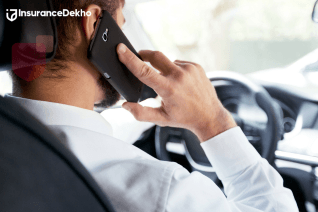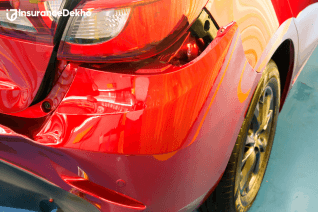How To Apply for Driving Licence Online in India?
Here is how you can get your driving licence.
If you prefer to drive your car swiftly on the roads, then you must master the skill of driving. A personal means of road transport is vital in commuting to different locations conveniently. But prior to all these aspirations, you need to have a valid driving licence in order to drive your car legally on Indian roads. Thus, to get a permanent driving licence, you need to apply for it separately. Initially, anybody in India who wish to apply for a driving licence has to get a learner’s licence. One month after the issued learner’s licence, the person has to appear for a driving test conducted by the RTO authority. After a proper examination, the authority will declare the final results.
Table of Contents
- What Does a Driving Licence Mean in India?
- Can you Get Car Insurance if you don't have a Driving License?
- Types of Driving Licence in India
- Eligibility Criteria for Getting Driving Licence in India
- Documents Required For Driving Licence
- How to Apply for a Driving Licence Online?
- What is the International Driving Permit (IDP) in India?
Prior to applying for a valid licence, an individual who is practising should have a learner’s licence which acts as a provisional licence until he finally qualifies to get a validated driving licence.
What Does a Driving Licence Mean in India?
A driving licence is an official certificate issued by the Government of India under the departments of the Regional Transport Office (RTO) or Regional Transport Authority (RTA) of that particular state. Through this licence, different vehicles in India operate openly without any internal supervision. The Indian Motor Tariff Act 2002, further put stress on that fact that an individual without a valid licence is not authorized to drive on the public roads of India.
Can you Get Car Insurance if you don't have a Driving License?
If you have purchased a new car and want to get a car insurance plan for it without having a valid driving licence, you can have it. In India, to own a car insurance plan, a driving licence is not necessary as you may buy a car for your family or can use it always with a driver for which you do not need to have a driving licence. In fact, it is not mandatory to own a driving licence even for registering a car.
However, a driving licence is not compulsory to buy a car insurance policy, but it is an essential document required to raise an insurance claim, especially for making a claim for accidental damage. In the case of an accident, if the car driver does not carry a valid driving license, the insurance company may reject the claim, but if he does, the claim amount will be deposited into the bank account of the policyholder.
Types of Driving Licence in India
In India, driving licence are generally categorized into three types depending upon the purpose and utility of the vehicle. The process and application for registration vary in obtaining all these three types of driving licence.
Learner’s Licence
After an initial training for thirty days, a person becomes eligible to acquire a learner’s licence. This is a licence approved on a temporary basis, and it is active only for a period of six months. Any person who is willing to learn driving should opt for this licence in the first place.
Driver’s Licence (Private)
After the fruitful completion of training for driving a vehicle, one can have a driving licence. Having a valid driving licence is mandatory, according to the Indian Motor Tariff Act 2002. Getting a private driving licence, however, will not give access to drive a commercial vehicle.
Driver’s Licence (Commercial)
Driving a commercial vehicle means you have to take the additional responsibility of other passengers or goods while driving on the roads. Hence, getting a driving licence for a commercial purpose is slightly more complicated than for private use. The age limit is also higher to get a driving licence here, which is three years more than in case of a private licence, i.e. twenty-one years. Besides, the driver needs to carry a fitness certificate while driving a commercial vehicle.
Eligibility Criteria for Getting Driving Licence in India
The eligibility for getting a driving licence in India depends on factors like the type of driving licence and the class of the vehicle. These criteria are further discussed below.
- The applicant must have valid age and residential proof documents along with a conversance in traffic rules and regulations in India.
- The applicant must complete his/her eighth standard. In case of a driving licence for private use, the age limit is eighteen years while in case of a driving licence for commercial use the age limit is twenty-one years.
Documents Required For Driving Licence
To ensure there are no setbacks in the application procedure, you require soft copies of some specific documents like:
- Learner’s Licence
- Age Proof (birth certificate, tenth standard mark sheets, transfer certificate, PAN card, passport)
- Residential Proof (Voter id card, Aadhar card, electricity bill, ration card, LIC bond, etc.)
- Signature
- Passport size photograph
- Medical certificate
- Certificate from a recognized driving school
- Documents related to the type of vehicle you are operating
How to Apply for a Driving Licence Online?
Following a few necessary steps will help you to apply for a driving licence online. At first, you need to log on to the official website of ‘Sarathi’ under the Road Transport & Highways Ministry. From a column called ‘Sarathi Services’, you need to select ‘New Driving Licence’. After getting redirected to an entirely new webpage, read all the instructions carefully, download the application form, and fill the required areas. This process is appropriately explained below.
- Download the driving licence application form from the Sarathi website (https://sarathi.nic.in/).
- As per the given instructions, fill the form and click on ‘Submit’ option.
- In case the applicant is minor, the form is required to be printed, and part D section has to be filled with the guidance of parents or guardian at the nearest RTO.
- Submit other essential documents along with the application form (age proof, residential proof, learner’s licence, etc.)
- A web-based application number will be displayed after the submission of the documents. It will act as a reference for tracking the application status.
- As the step gets completed, a notification will be received via SMS.
To get a permanent driving licence in India, you need to wait for 30 days from the date of issuance of your learner’s licence before you can apply for a permanent one. Moreover, you need to file the application within 180 days after this 30-day period after the learner’s licence has lapsed. You will also require to go for a test drive after you have applied for a permanent licence. Depending upon your performance and the validity of all the documents, the authority will decide whether to issue you a permanent driving licence.
What is the International Driving Permit (IDP) in India?
Individually a car owner can also opt for an International Driving Permit (IDP) in India if he prefers to drive his wheels on the foreign lands. Through this driving licence, an Indian citizen gets permission to drive his car in a different country. An IDP is somewhat similar to a passport and has features of multiple language translation. The procedure for acquiring an IDP usually differs from one state to another. To get the detailed information regarding this aspect, you can contact your nearest RTO department to know about the application system and list of other requisite documents.
For further reading:
Tips to Get No Claim Bonus Discounts by Driving Safe in India
Disclaimer: This article is issued in general public interest and meant for general information purposes only. Readers are advised not to rely on the contents of the article as conclusive in nature and should research further or consult an expert in this regard.














































